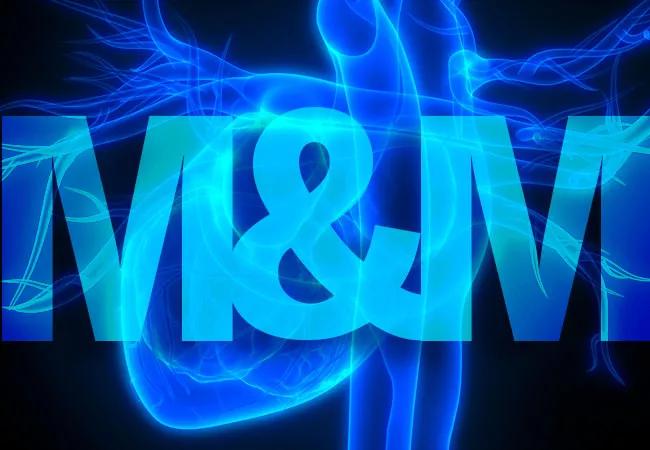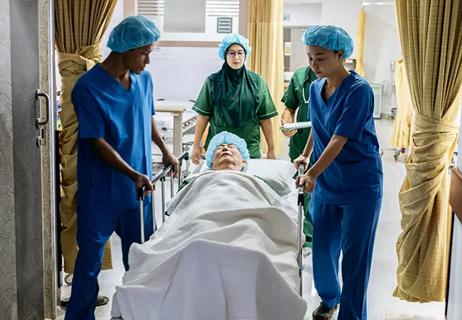How we helped an allied hospital restructure its reviews with a constructive focus on quality

When Deborah Heart and Lung Center in Browns Mills, New Jersey, began its alliance relationship with Cleveland Clinic’s Miller Family Heart, Vascular & Thoracic Institute in August 2019, its aim was to further enhance a well-established tradition of superior caregiving. As a hospital focusing on cardiac, vascular and lung disease, Deborah had a long history of service to its community in the Delaware Valley region of Southern New Jersey. That history was centered on a proud embrace of continuous improvement methods and investigating better ways of providing top-quality patient care and outstanding clinical outcomes.
Advertisement
Cleveland Clinic is a non-profit academic medical center. Advertising on our site helps support our mission. We do not endorse non-Cleveland Clinic products or services. Policy
Deborah leadership viewed the alliance relationship with Cleveland Clinic as an opportunity to expand the value of its services through sharing of clinical best practices to maximize the quality and efficiency of care delivery. “My top priority was to refine quality improvement structures, processes and protocols across all departments of our center,” says Kintur Sanghvi, MD, Associate Medical Director of Interventional Cardiology and Endovascular Medicine at Deborah Heart and Lung Center and medical director of its alliance with Cleveland Clinic.
Not long after the alliance relationship was established, Dr. Sanghvi began working with Cleveland Clinic Heart and Vascular Advisory Services to evaluate the morbidity and mortality (M&M) conferences of Deborah’s interventional cardiology team to identify potential opportunities for improvement.
Although the structure and processes of M&M conferences vary among institutions, well-run conferences serve the dual purposes of identifying system or process issues that could compromise optimal care delivery while also providing an educational forum where errors in care delivery can be openly discussed in a nonpunitive fashion, with the purpose of modifying behaviors or processes to prevent repetition of the error.
Early in his interactions with Cleveland Clinic, Dr. Sanghvi grew interested in what he learned about the evolution in the approach and structure of Cleveland Clinic’s interventional cardiology M&M conferences over time. As a result of this evolution, cases at Cleveland Clinic conferences now are presented by physicians in training to an audience of peers that includes physician instructors. After the case presentation, a group discussion is held with questions, peer comments and teaching points derived from a review of current literature. Participants usually include all individuals involved in the patient’s care in the catheterization lab as well as some involved prior to and after care in the cath lab, such as emergency medical services personnel and emergency department, ICU and floor care providers.
Advertisement
The resulting open discussions among this diverse and inclusive group yield several benefits:
As Dr. Sanghvi learned more about this Cleveland Clinic approach, he directly engaged two physician leaders from Cleveland Clinic Heart and Vascular Advisory Services — interventional cardiologist Christopher Bajzer, MD, and cardiac surgeon Edward Soltesz, MD, MPH — to better understand the structure of Cleveland Clinic’s M&M conferences and the philosophy behind it. The collaboration included a virtual meeting in May 2020 in which the Cleveland Clinic physicians detailed how their teams approach M&M conference case selection and discussion format. They also shared with Dr. Sanghvi formal morbidity and mortality guidelines for interventional cardiology as well as Cleveland Clinic’s specific case review forms and relevant dashboards used for M&M conferences.
These exchanges prompted Dr. Sanghvi to lead an effort to restructure and improve Deborah Heart and Lung Center’s M&M conferences, starting with those for interventional cardiology.
Prior to the input from Cleveland Clinic, Deborah’s M&M conferences were limited to evaluation of cases with mortality or severe morbidity, and discussions involved cases and images only, without an overview of quality issues or metrics. In the past few months, Deborah’s interventional cardiology section has implemented into its M&M conferences a number of the quality improvement processes shared by Cleveland Clinic. For conferences from August 2020 onward, these revisions have included the use of adapted versions of Cleveland Clinic’s dashboard and case review forms tailored to Deborah’s specific needs.
Advertisement
Key process changes to the interventional cardiology M&M conferences include:
While the changes are too recent to have yet impacted quality metrics, they have already succeeded in increasing attendance and improving participation in M&M conferences among Deborah physicians.
“The Cleveland Clinic team has been exceptional in their continuous quality improvement processes, and they did not hold anything back,” observes Dr. Sanghvi. “Multiple physician and administrative leaders shared their wealth of knowledge and experience in one-to-one calls that have helped us customize processes to our needs and implement constructive changes with unprecedented speed.”
“This specific collaboration is just one of many benefits arising from our alliance relationship with Deborah Heart and Lung Center,” notes Dr. Bajzer of Cleveland Clinic. “We were able to share some of our structure and process around M&M conferences to improve the value of their team’s time spent in terms of continuing education as well as feedback on hospital process and policy and individual practice patterns. We expect these changes to result in even more consistent delivery of high-quality care, which will likely be demonstrated over time in publicly reported quality metrics and benchmarks.”
Advertisement
“One of the big advantages of our alliance with Cleveland Clinic is the ability to collaborate with their staff on opportunities to improve every dimension of care,” adds Joseph Chirichella, President and CEO of Deborah Heart and Lung Center. “In a highly competitive environment, improvements in care, process and cost are compatible with delivering value to patients and payors.”
For information on affiliation and alliance opportunities with Cleveland Clinic’s Heart, Vascular & Thoracic Institute, visit clevelandclinic.org/heartaffiliates or email HVI_Strategic_Operations@ccf.org.
Advertisement
Advertisement

How two Cleveland Clinic alliance hospitals systematically elevated echo standards

How Cleveland Clinic supported an alliance hospital to improve early extubation practices

How our HVTI Advisory Services team facilitated swift improvements for an allied health organization

Benefits include swifter patient transport, more on-time starts for cardiovascular procedures

How our Advisory Services and Affiliate Program has helped hospitals drive down SSI rates

How our HVTI Advisory Services team facilitated swift improvements for an affiliated health organization

How a site visit helped Parkview Heart Institute expand its vascular services and improve operations

How it works, and reflections from a longtime alliance hospital